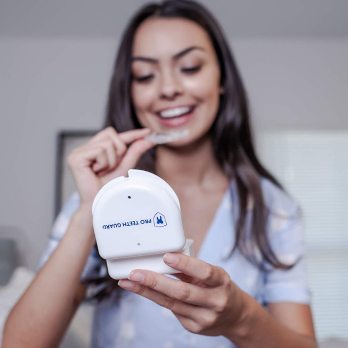Red Light Therapy For Bruxism
26th Jun 2025
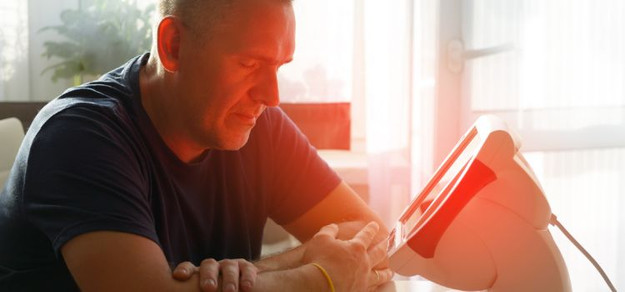
Do you wake up with a sore jaw or headaches from grinding your teeth? Bruxism (teeth grinding and clenching) can cause pain, tension, and tooth damage. Many people use night guards, but some look for other ways to relax their jaw muscles.
Red light therapy (RLT) is a non-invasive treatment that may help reduce pain and muscle tension. We’ll explain how it works, its potential benefits for bruxism, and how to use it safely.
If you’re looking for relief beyond a custom-fit night guard, red light therapy may be worth trying.
What is Red Light Therapy?
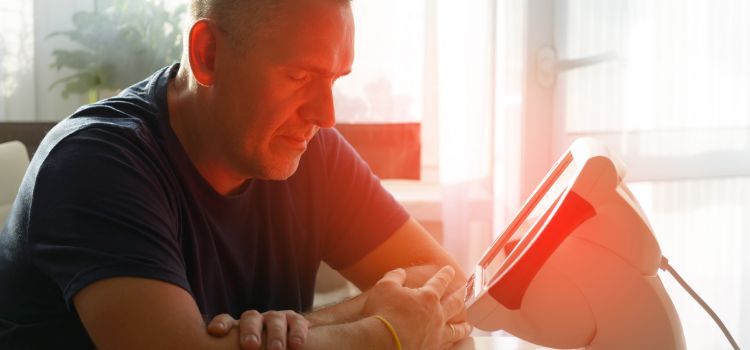
Red light therapy (RLT) is a non-invasive treatment that uses red and near-infrared light to help the body heal and reduce pain. It works by going into the skin and helping cells make more energy, which supports tissue repair, lowers inflammation, and improves blood flow.
A study published in the Journal of the American Academy of Dermatology found that low-level red and infrared light increased the expression of collagen and elastin in human skin cells, suggesting potential for improving skin elasticity and reducing signs of aging.
NASA research demonstrated that red and near-infrared light accelerated wound healing in animal models by promoting cell growth and tissue repair.
Note: Because of these effects, RLT is FDA-cleared for pain relief in some medical applications, including muscle recovery and joint pain management. Some people use it to help with jaw tension and TMJ-related discomfort, which are common in bruxism.
Can Red Light Therapy Help with Bruxism?
While red light therapy (RLT) doesn't stop teeth grinding, it may help relieve the jaw pain and tension that come with bruxism. By improving blood flow and reducing inflammation, RLT can relax tight jaw muscles and ease discomfort.
A study published in Pain Research and Treatment found that red LED therapy significantly improved symptoms like jaw pain, clicking, and muscle tenderness in patients with temporomandibular disorders (TMD), which are often linked to bruxism.
Note: So, while RLT isn't a cure for bruxism, it can be a helpful addition to your treatment plan, especially if you're dealing with jaw soreness or stiffness.
Related Articles:
- Jaw Pain: Why Does It Hurt On One Side
- How To Relieve Tooth Pain From Grinding?
- What Does TMJ Feel Like?
How to Use Red Light Therapy for Bruxism Relief
Pick the Right Device
Choose a red or near-infrared light device made for pain relief. A handheld light is great for targeting the jaw area.
Stick to a Routine
Use it for 10–20 minutes, about 3 to 5 times a week. Be consistent—results take time, often a few weeks.
Use It Safely
Hold the device near your jaw and TMJ area. Don’t shine it in your eyes—wear protective glasses if needed.
How Red Light Therapy Compares to Other Treatments
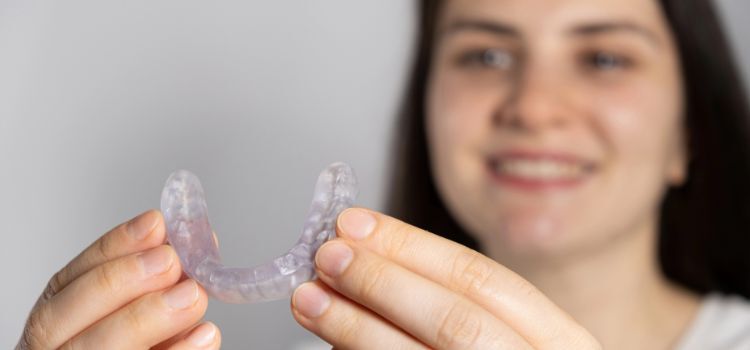
Night Guards
Protect your teeth from wear during sleep. They don’t relieve jaw tension but are great for preventing damage.
Botox Injections
Reduce jaw clenching in severe cases. Effective but temporary, expensive, and may have side effects.
Massage Therapy
Loosens tight jaw muscles and feels relaxing. Results don’t last long and need regular sessions.
Stress Management
Helps if stress is causing your grinding. Useful, but may not be enough on its own.
Best Approach? Combining treatments—like a night guard, red light therapy, and stress relief—often works best.
Related Articles:
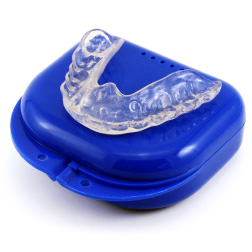
- Most Popular
- Hard Outside, Soft Inside
- 2MM Thick
- Moderate / Heavy
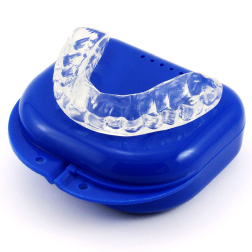
- Most Durable
- Hard Materials
- 1.5MM Thick
- Heavy / Severe
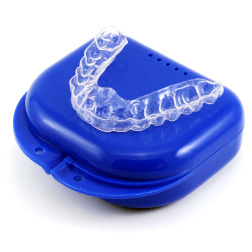
- For Day Time Use
- Thin, Barely Visible
- 1MM Thick
- Light / Moderate
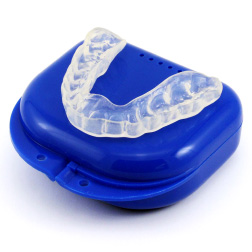
- For Clenching
- Flexible & Soft
- 1.5MM Thick
- Light / Moderate
Potential Risks and Limitations of Red Light Therapy
Red light therapy is generally safe, but there are a few things to keep in mind:
Won’t Stop Grinding – RLT can ease jaw pain and muscle tension, but it doesn’t prevent bruxism. A night guard is still needed to protect your teeth.
Requires Consistency – Results aren’t instant. You may need several weeks of regular use to see benefits.
Eye Safety – Avoid direct exposure to your eyes, as strong LED lights can be harmful. Wear protective eyewear if needed.
Not for Everyone – People with photosensitivity or certain medical conditions should consult a doctor before using RLT.
Note: For best results, combine red light therapy with a night guard, stress management, and regular dental care.
FAQs: Red Light Therapy for Bruxism
1. Can red light therapy stop bruxism?
No, red light therapy does not stop teeth grinding. However, it may help relax jaw muscles, reduce pain, and relieve tension, making it a useful complementary treatment.
2. Can I use red light therapy along with a night guard?
Yes! A night guard protects your teeth, while red light therapy helps relax your jaw muscles and reduce pain. Using both together may provide better relief for bruxism symptoms.
3. Can red light therapy replace a night guard?
No. Red light therapy helps with pain and muscle relaxation, but it doesn’t stop teeth grinding. A night guard remains the best solution for preventing damage to your teeth.
4. Is red light therapy FDA-approved?
No, but many red light therapy devices are FDA-cleared. This means they’ve been checked for safety and are okay to use for things like pain relief and muscle recovery.
5. Can I do red light therapy at home?
Yes! Many FDA-cleared red light therapy devices are available for home use. Just follow the instructions for wavelength settings, duration, and positioning for safe and effective treatment.
Is Red Light Therapy Worth Trying for Bruxism Relief?
Red light therapy won’t stop teeth grinding, but it may help relax jaw muscles, reduce pain, and ease tension caused by bruxism. If you experience jaw soreness, headaches, or TMJ discomfort, RLT could be a useful addition to your treatment plan.
However, for long-term protection against tooth damage, a custom-fitted night guard remains the best solution. Pairing red light therapy with a well-fitted night guard can help manage both symptoms and grinding-related wear on your teeth.
References:
- Al-Quisi, A. F., Jamil, F. A., Abdulhadi, B. N., & Muhsen, S. J. (2023). The reliability of using light therapy compared with LASER in pain reduction of temporomandibular disorders: A randomized controlled trial. BMC Oral Health, 23, Article 91. https://doi.org/10.1186/s12903-023-02784-8
- Kim, B. (2019). Low-level red and infrared light increases expression of collagen, elastin, and hyaluronic acid in skin. Journal of the American Academy of Dermatology, 81(3), AB147. https://doi.org/10.1016/j.jaad.2019.06.123
- NASA. (2022, May 19). NASA research illuminates medical uses of light. NASA Spinoff. https://spinoff.nasa.gov/NASA-Research-Illuminates-Medical-Uses-of-Light

- Most Popular
- Hard Outside, Soft Inside
- 2MM Thick
- Moderate / Heavy

- Most Durable
- Hard Materials
- 1.5MM Thick
- Heavy / Severe

- For Day Time Use
- Thin, Barely Visible
- 1MM Thick
- Light / Moderate

- For Clenching
- Flexible & Soft
- 1.5MM Thick
- Light / Moderate
